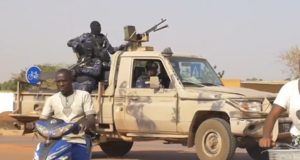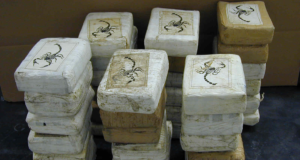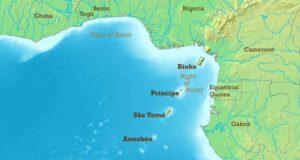By Elizabeth Laruni and Michelle McKenna.
26th February 2014, Human Rights and Conflict Resolution, Issue 1, No. 5.
For a country that had long been plagued with conflict, independence from Sudan in July 2011 appeared to be a positive step forward for the peoples of South Sudan. However, merely two and a half years later, the country has been plunged into conflict once again, spelling disaster for the future of this young nation.
Even prior to gaining independence in 2011 the peoples of South Sudan had already endured decades of civil war, authoritarian rule, ethnic conflict and severe economic underdevelopment. The current conflict is an accumulation of Sudan’s colonial and post-colonial political, and socio-economic legacy derived from regional segregation, religious tensions, and competition for economic commodities and political power.
In line with other British colonies such as Nigeria, Sierra Leone and Uganda, British colonial officers in Sudan utilised the ethos of ‘divide and rule’ through the administrative principle of indirect rule. Sudan was divided administratively, but not politically, between the predominately Arabic North and the ‘African/Christian’ South, consisting mainly of Nilotic speaking ethnic groups including the Dinka, Nuer and Shilluk. The British further divided tribal groups in the South through the implementation of indirect rule by officialising chiefly authority through the Native Administrative. This essentially reinforced and politicised intra-tribal identities within Southern Sudan, a legacy that still resonates today. Nationally, the North was afforded more educational facilities and economic investment with Northerners designated for jobs in the service sectors whilst their Southern counterparts were to provide a source for menial labour.[1]
After administering Northern and Southern Sudan as two separate administrative entities, on the run up to independence in 1956 the British decided that the country was to be left as a unified nation state. Inevitably, Southern Sudanese political elites became fearful that an independent Sudan would be dominated by the more developed and in terms of population, numerous Arabic North. This set the stage for the first civil war in Sudan, lasting from 1955 to 1972.
Following a succession of military mutinies, coup d’états, a peace agreement was signed under the Addis Ababa agreement in 1972 granting Southern Sudan limited regional autonomy, despite opposition from some Northerners and Southerners who were demanding either complete separation or continued Northern control over the Southern region. However, political and religious tensions ensued unabated cumulating in the 1983 Islamic Revolution, which established an authoritarian regime based on sharia law, essentially dissolving the South Sudan regional government.
In the same year the Sudanese People’s Liberation Army (SPLA) led by Dr John Garang – a Dinka army officer – was established to counter the dominance of the Sudanese central government. The SPLA played a central role in the second Sudanese civil war between 1983-2005. The SPLA was established as a largely Southern-based Christian organisation although it also drew some support from the North. Under the leadership of Garang, the SPLA continued to demand the establishment of a secular democratic Sudanese government under a confederacy system even though some of its members were demanding complete separation. Political divisions within the SPLA ensured that political and military cohesion could not be realistically achieved.
In 1991 a faction group led by Riek Machar, a Nuer and senior member of the SPLA, broke away from the leadership of Garang to form the SPLA-A Nasir (SPLA/AN). Machar and Garang disagreed fundamentally on what kind of government should be formed in South Sudan.[2] Whilst Garang advocated for regional political autonomy, Machar wanted independence and complete separation. Machar challenged Garang’s political authority by manipulating ethnic identities in an attempt to establish his support base.[3] The conflict between the two factions eventually led to the 1991 Bor massacres where Nuer fighters from the SPLA/AN massacred around 2,000 predominantly Dinka civilians.[4] Machar reinforced his defection from Garang by signing a treaty with the government in Khartoum in 1997, after which he was appointed as head of the government backed South Sudan Defence Forces (SSDF).
The uneasy alliance between Machar and the Sudanese government was to last for only a short while and in 2002 Machar broke away once again to form the Sudan People’s Defence Forces/Democratic Front (SPDF/DF), which eventually remerged, with the SPLA in the same year. Following the death of Garang in a helicopter crash in 2005 a comprehensive peace agreement was signed between the government of Sudan and the SPLA that detailed a power sharing arrangement, where the South was granted its own government and autonomy for six years. The peace agreement stipulated that Northern and Southern Sudan could retain their own armies and oil revenues were to be equally shared between the two regions. As well as this, a full referendum was to be scheduled for 2011 where the peoples of the region could vote on the politically divisive issue of outright independence.[5]
Salva Kiir – a long-standing member of the SPLA – was elected as President of South Sudan in 2005, with Machar as the vice President following the death of the sitting President Garang in the same year. As a member of the SPLA since its formation in 1983, Kiir’s political beliefs had been closely aligned with Garang with Kiir acting as former’s deputy within the SPLA.[6] With the lead up to independence in 2011, the SPLA grew both in numbers and popularity and remained the dominate political party within the South Sudan government. Unsurprisingly, the political wing of the group, the Sudanese Peoples Liberation Movement (SPLM) was well placed during the 2011 elections taking office following official the split from Sudan.
Perhaps inevitably, independence did not bring an end to the years of political rivalries, power struggles and ethnic tensions within the newly independent nation state. Things took a turn for the worse as relations further soured between Kiir and Machar in summer last year when the President dismissed Machar and the rest of his cabinet as part of a power struggle within the ruling SPLM. This came three weeks after Machar was quoted as saying, “to avoid authoritarianism and dictatorship, it is better to change.” There was a belief growing in South Sudan at the time that the way Kiir was running the country was bringing it back into line with the al-Bashir government that they had long fought against. Following the dismissal of the cabinet, 11 suspected pro-Marchar former cabinet members were arrested and detained, whilst Machar managed to flee.[7]
 Human Security Centre Human Rights and International Security Research
Human Security Centre Human Rights and International Security Research



